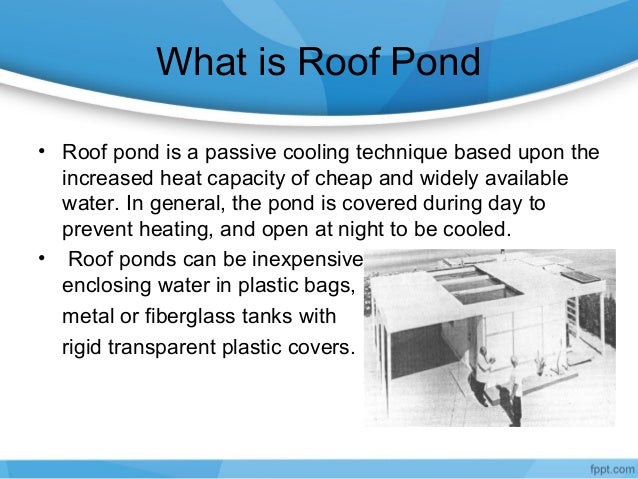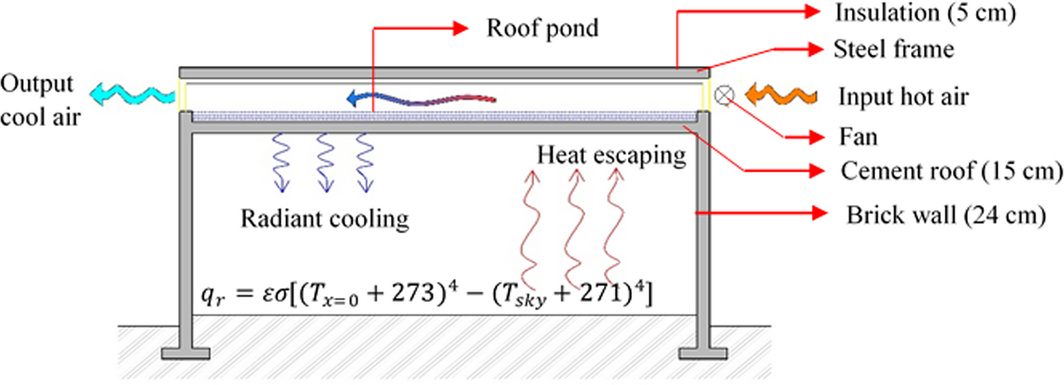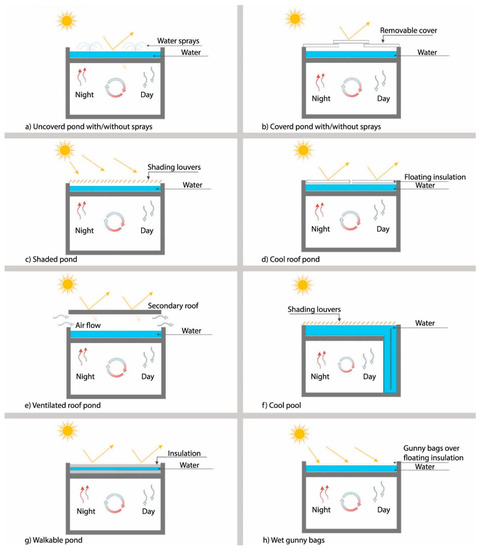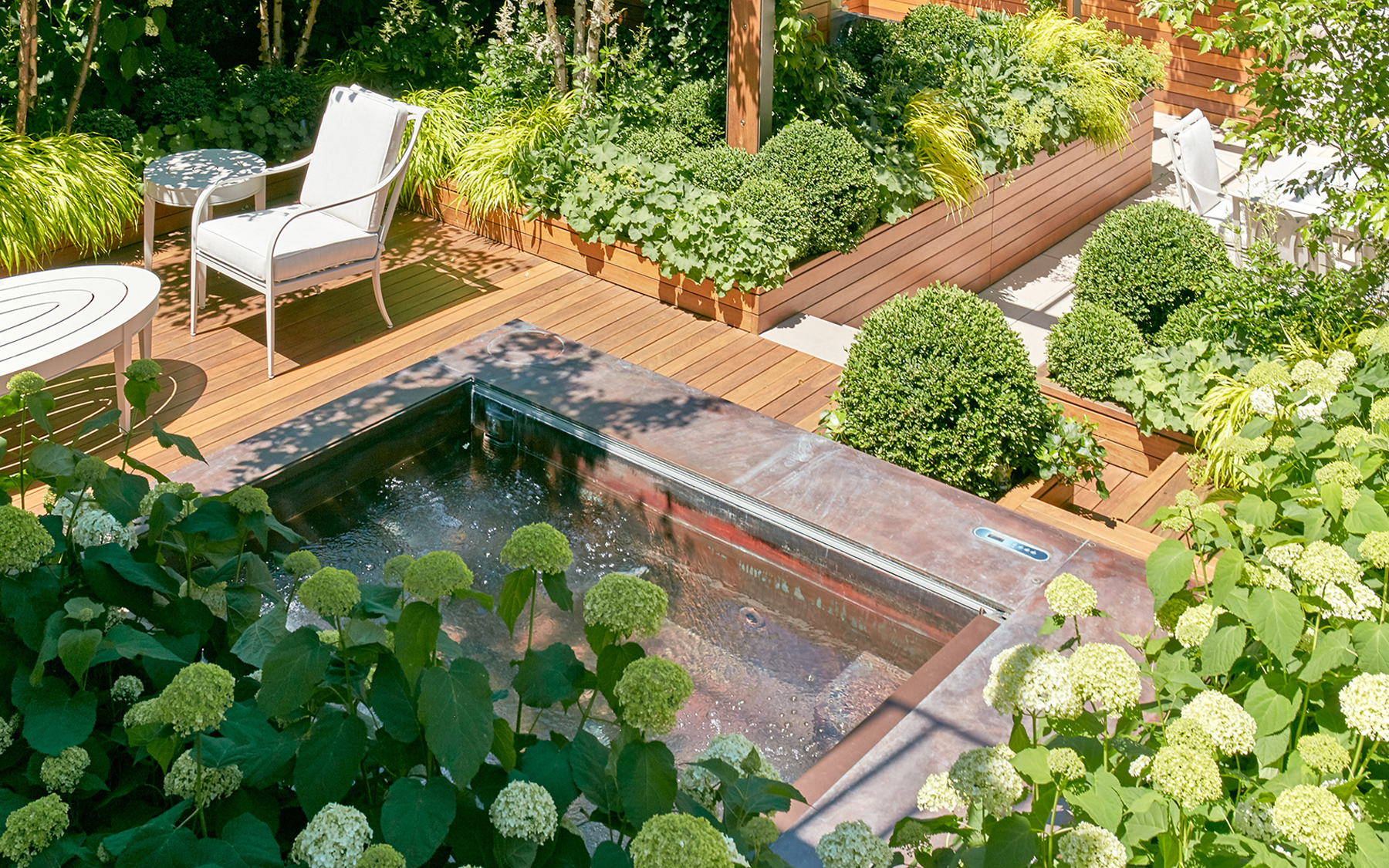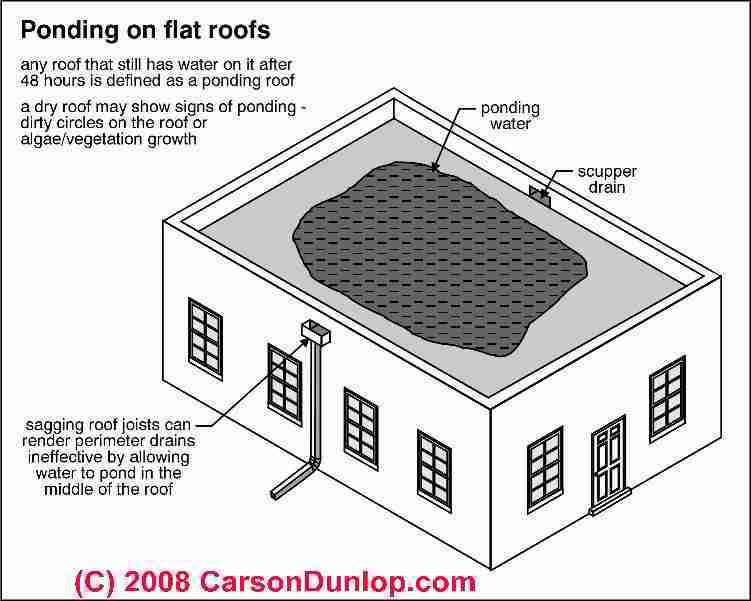Roof Pond Definition

The roof ponds of contained water are the heating and cooling unit.
Roof pond definition. The roof pond approach brings the differing building aspects of a building roof ceiling heating and cooling system and heat distribution does away with ducts into one system. Ponding is the typically unwanted pooling of water typically on a flat roof or roadway. Ponding water accelerates the deterioration of many materials including seam adhesives in single ply roof systems steel equipment supports and particularly roofing asphalt. Leaks from cooler lines to structural issues building a flat roof can bring considerable advantages for your commercial roof primarily in providing more interior space.
An insulated roof pond with materials such as polystyrene panels is placed over the roof and filled with water up to a certain level average water depth in the reviewed papers was 15 cm. In the building trades the acronym tpo stands for thermoplastic polyolefin a material originally developed for pond liners and used extensively for roofing since 1989 it s a single ply membrane made from a polymerized combination of polypropylene and ethylene propylene rubber that can be attached to a roof with adhesive or with mechanical fasteners. Roof pond with wet gunny bags rpwgb and shaded roof pond with wet gunny bags shaded rpwgb are two roof pond permutations to be discussed here see fig. Flat roofs are an ancient form mostly used in arid climates and allow the roof space to be used as a living space or a living roof flat roofs or low slope roofs are also commonly found on commercial.
The roof ceilings of the building act as the structural support for the roof ponds. So what is roof ponding. Ponding water sources other than rain. Well it s not as fun as it sounds.
Flat roofs are inherently bad at draining water unlike sloped roofs. When drainage fails water will run to low points in a flat roof. Overall 19 roof pond cooling and 4 roof pond heating systems were identified. This review suggests that in some cases roof ponds can provide year round thermal comfort while reducing demand for active heating and cooling systems.
Because the water increases the thermal mass of the building it also increases the gain in solar energy storing the absorbed energy during the day when it is abundant for later use. A pond of water on a roof structure that cools a building by evaporation.
